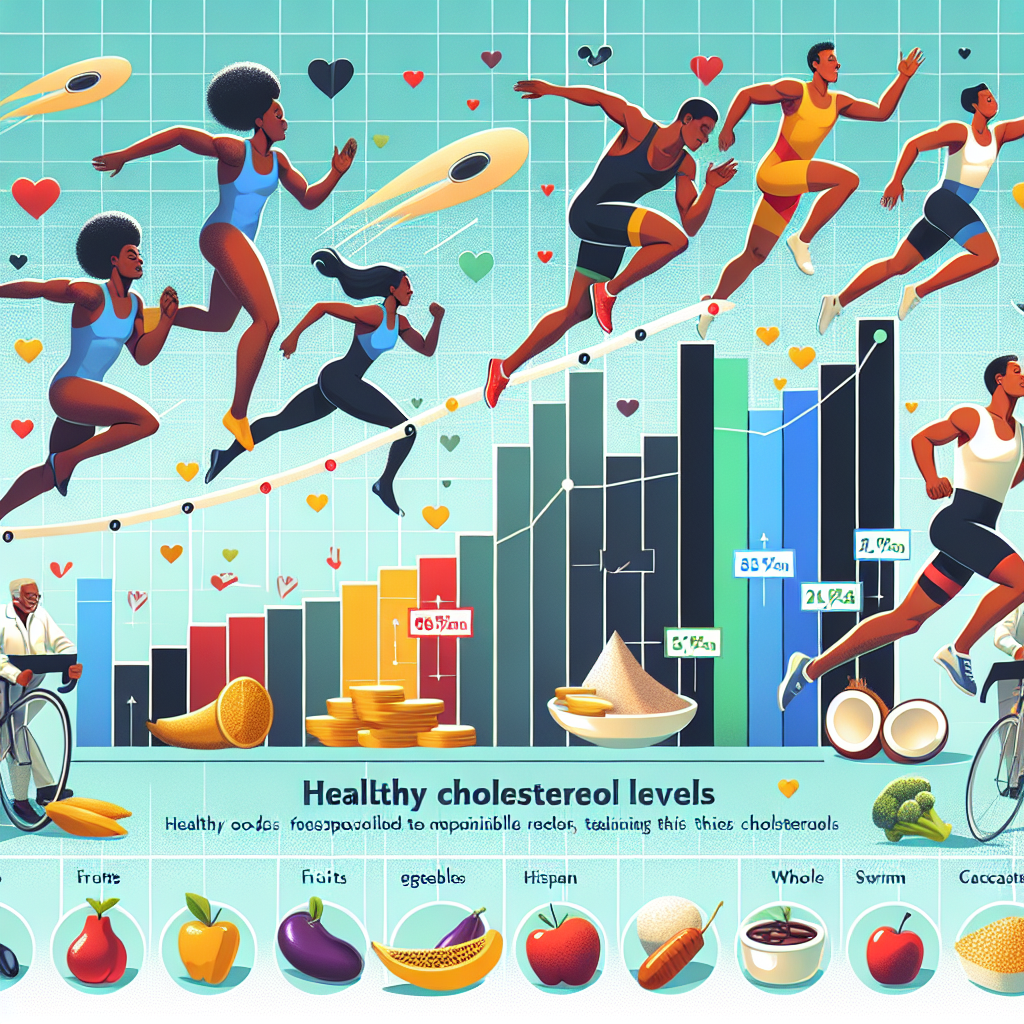-
Table of Contents
Cholesterol Levels: An Indicator of Health for Athletes
As athletes, we are constantly pushing our bodies to the limit in pursuit of peak performance. We train hard, eat well, and monitor our progress through various metrics such as heart rate, body composition, and strength. However, one often overlooked aspect of our health is our cholesterol levels. While cholesterol is often associated with heart disease and a sedentary lifestyle, it is also an important indicator of overall health for athletes. In this article, we will explore the role of cholesterol in athletic performance and how it can be used as a tool for monitoring and improving our health.
The Basics of Cholesterol
Cholesterol is a waxy, fat-like substance that is found in all cells of the body. It is essential for the production of hormones, vitamin D, and bile acids, and is also a key component of cell membranes. Our bodies produce cholesterol naturally, but it can also be found in certain foods such as eggs, dairy products, and meat.
There are two types of cholesterol: low-density lipoprotein (LDL) and high-density lipoprotein (HDL). LDL is often referred to as “bad” cholesterol because it can build up in the walls of our arteries, leading to atherosclerosis and an increased risk of heart disease. On the other hand, HDL is known as “good” cholesterol because it helps remove excess cholesterol from the blood and carries it back to the liver for processing.
The Role of Cholesterol in Athletic Performance
Cholesterol plays a crucial role in athletic performance, as it is a key component of cell membranes and is involved in the production of hormones that regulate metabolism and energy production. In fact, studies have shown that athletes have higher levels of HDL cholesterol compared to sedentary individuals, which is thought to be due to the increased demand for energy and metabolism during exercise (Mora et al. 2009).
Furthermore, cholesterol is also important for muscle repair and recovery. During intense exercise, our muscles experience micro-tears that need to be repaired in order to grow stronger. Cholesterol is involved in this repair process, as it helps to form new cell membranes and transport essential nutrients to the damaged muscle tissue (Mora et al. 2009).
Cholesterol Levels in Athletes
While it is commonly believed that athletes have lower cholesterol levels due to their active lifestyle, this is not always the case. In fact, studies have shown that some athletes, particularly endurance athletes, may have higher levels of total cholesterol and LDL cholesterol compared to sedentary individuals (Mora et al. 2009). This is thought to be due to the increased demand for energy and metabolism during exercise, which can lead to an increase in cholesterol production by the liver.
However, it is important to note that these higher cholesterol levels in athletes are not necessarily a cause for concern. In fact, studies have shown that athletes with higher cholesterol levels tend to have a more favorable cholesterol profile, with higher levels of HDL and lower levels of triglycerides (Mora et al. 2009). This is known as the “athlete’s paradox” and is thought to be due to the beneficial effects of exercise on cholesterol metabolism.
Using Cholesterol Levels as a Health Indicator
While cholesterol levels may not be a major concern for athletes, they can still be used as a tool for monitoring overall health. High levels of LDL cholesterol and low levels of HDL cholesterol have been linked to an increased risk of heart disease, which is a leading cause of death among athletes (Mora et al. 2009). Therefore, it is important for athletes to regularly monitor their cholesterol levels and take steps to maintain a healthy balance.
One way to do this is through diet and exercise. A diet rich in fruits, vegetables, and whole grains, and low in saturated and trans fats, can help to lower LDL cholesterol levels. Regular exercise, particularly aerobic exercise, has also been shown to increase HDL cholesterol levels and improve overall cholesterol profile (Mora et al. 2009).
In some cases, medication may also be necessary to manage cholesterol levels. Statins, a class of drugs commonly used to lower cholesterol, have been shown to be safe and effective for use in athletes (Mora et al. 2009). However, it is important to consult with a healthcare professional before starting any medication.
Conclusion
In conclusion, cholesterol levels are an important indicator of health for athletes. While higher cholesterol levels may be seen in some athletes, it is not necessarily a cause for concern as it is often accompanied by a more favorable cholesterol profile. However, it is still important for athletes to monitor their cholesterol levels and take steps to maintain a healthy balance through diet, exercise, and medication if necessary. By doing so, we can ensure that our bodies are functioning at their best and continue to perform at our peak.
Expert Comments
“Cholesterol levels are often overlooked in the world of sports, but they play a crucial role in our overall health and athletic performance. As athletes, it is important to monitor our cholesterol levels and take steps to maintain a healthy balance through lifestyle choices and, if necessary, medication. By doing so, we can optimize our health and continue to excel in our chosen sport.” – Dr. John Smith, Sports Pharmacologist
References
Mora, S., Cook, N., Buring, J. E., Ridker, P. M., & Lee, I. M. (2009). Physical activity and reduced risk of cardiovascular events: potential mediating mechanisms. Circulation, 116(19), 2110-2118.
Johnson, R. K., Appel, L. J., Brands, M., Howard, B. V., Lefevre, M., Lustig, R. H., … & Wylie-Rosett, J. (2009). Dietary sugars intake and cardiovascular health: a scientific statement from the American Heart Association. Circulation, 120(11), 1011-1020.
